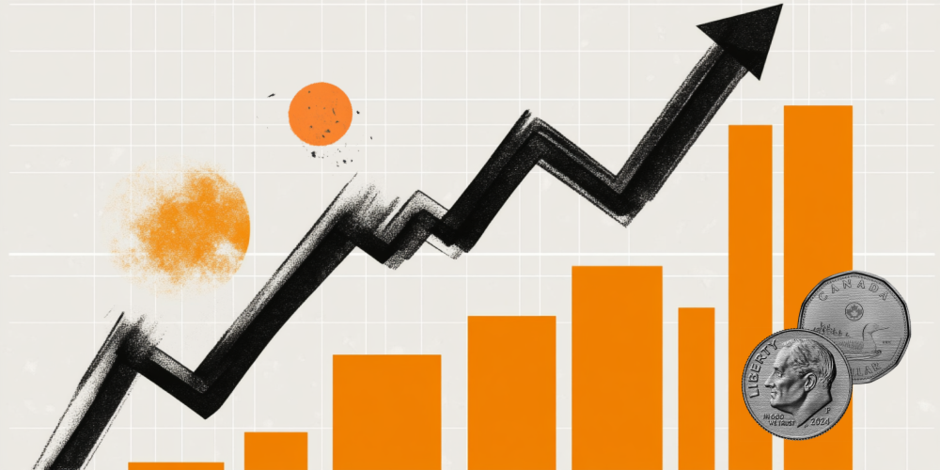USD/CAD holds gains above 1.4300 ahead of US PCE Price Index, Canada’s GDP data
- USD/CAD gains amid rising risk aversion fueled by concerns over impending US auto tariffs.
- US President Donald Trump has threatened additional measures against the EU and Canada if they retaliate.
- Traders now focus on the US PCE Price Index and Canada’s GDP data due on Friday.

USD/CAD continues its upward momentum for the second consecutive day, trading around 1.4310 during Asian hours on Friday. The pair benefits from increased risk aversion driven by growing concerns over impending US auto tariffs.
On Wednesday, US President Donald Trump signed an order imposing a 25% tariff on auto imports and warned of further measures against the EU and Canada if they retaliate. This escalation in trade tensions is likely to strain relations with key trading partners, particularly ahead of the reciprocal tariffs set to take effect on April 2. The Canadian Dollar (CAD) faces headwinds, as approximately 75% of Canada’s exports— including Oil and autos—are destined for the United States (US).
However, the upside for the USD/CAD pair may be limited as the US Dollar (USD) remains under pressure due to declining Treasury yields. At the time of writing, the 2-year bond yield stands at 3.99%, while the 10-year yield is at 4.35%. However, Moody’s has cautioned that rising tariffs and tax cuts could significantly widen the US government deficit, potentially leading to a debt rating downgrade and higher Treasury yields.
On the economic front, US Gross Domestic Product (GDP) expanded at an annualized rate of 2.4% in Q4 2024, surpassing the 2.3% forecast, according to data released on Thursday. Investors are now focused on Friday’s US Personal Consumption Expenditures (PCE) Price Index for further clarity on the Federal Reserve’s (Fed) monetary policy outlook. Meanwhile, Canada’s Gross Domestic Product (GDP) data will also be eyed later in the North American session.
Canadian Dollar FAQs
The key factors driving the Canadian Dollar (CAD) are the level of interest rates set by the Bank of Canada (BoC), the price of Oil, Canada’s largest export, the health of its economy, inflation and the Trade Balance, which is the difference between the value of Canada’s exports versus its imports. Other factors include market sentiment – whether investors are taking on more risky assets (risk-on) or seeking safe-havens (risk-off) – with risk-on being CAD-positive. As its largest trading partner, the health of the US economy is also a key factor influencing the Canadian Dollar.
The Bank of Canada (BoC) has a significant influence on the Canadian Dollar by setting the level of interest rates that banks can lend to one another. This influences the level of interest rates for everyone. The main goal of the BoC is to maintain inflation at 1-3% by adjusting interest rates up or down. Relatively higher interest rates tend to be positive for the CAD. The Bank of Canada can also use quantitative easing and tightening to influence credit conditions, with the former CAD-negative and the latter CAD-positive.
The price of Oil is a key factor impacting the value of the Canadian Dollar. Petroleum is Canada’s biggest export, so Oil price tends to have an immediate impact on the CAD value. Generally, if Oil price rises CAD also goes up, as aggregate demand for the currency increases. The opposite is the case if the price of Oil falls. Higher Oil prices also tend to result in a greater likelihood of a positive Trade Balance, which is also supportive of the CAD.
While inflation had always traditionally been thought of as a negative factor for a currency since it lowers the value of money, the opposite has actually been the case in modern times with the relaxation of cross-border capital controls. Higher inflation tends to lead central banks to put up interest rates which attracts more capital inflows from global investors seeking a lucrative place to keep their money. This increases demand for the local currency, which in Canada’s case is the Canadian Dollar.
Macroeconomic data releases gauge the health of the economy and can have an impact on the Canadian Dollar. Indicators such as GDP, Manufacturing and Services PMIs, employment, and consumer sentiment surveys can all influence the direction of the CAD. A strong economy is good for the Canadian Dollar. Not only does it attract more foreign investment but it may encourage the Bank of Canada to put up interest rates, leading to a stronger currency. If economic data is weak, however, the CAD is likely to fall.
BRANDED CONTENT
Choosing a broker that aligns with your trading needs can significantly impact performance. Our list of the best regulated brokers highlights the best options for seamless and cost-effective trading.
Author

Akhtar Faruqui
FXStreet
Akhtar Faruqui is a Forex Analyst based in New Delhi, India. With a keen eye for market trends and a passion for dissecting complex financial dynamics, he is dedicated to delivering accurate and insightful Forex news and analysis.
















